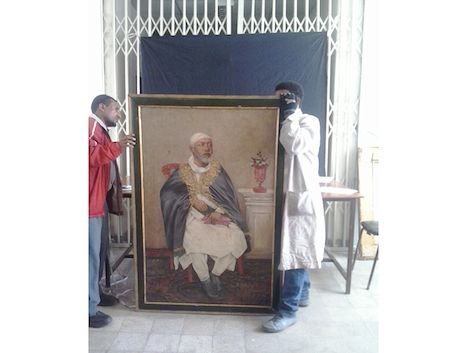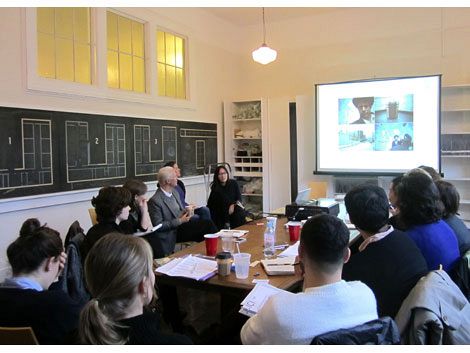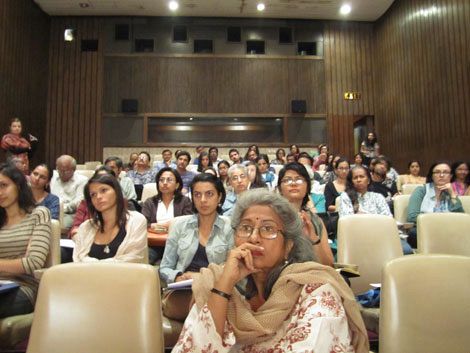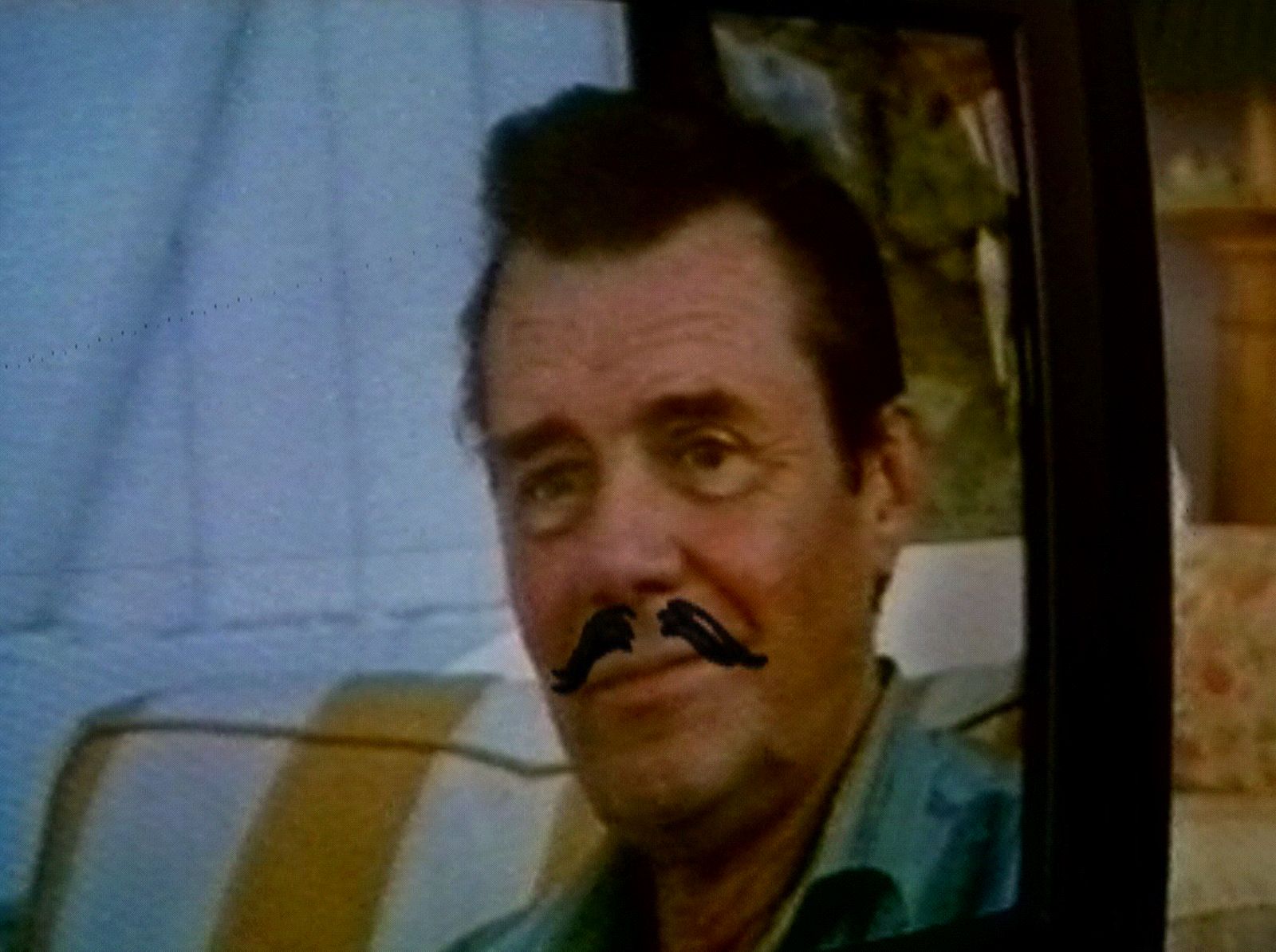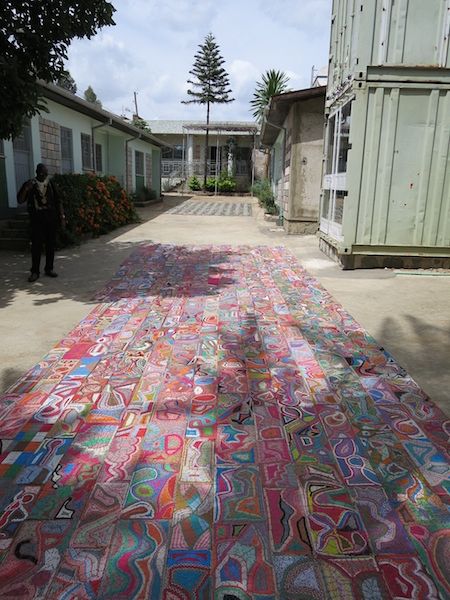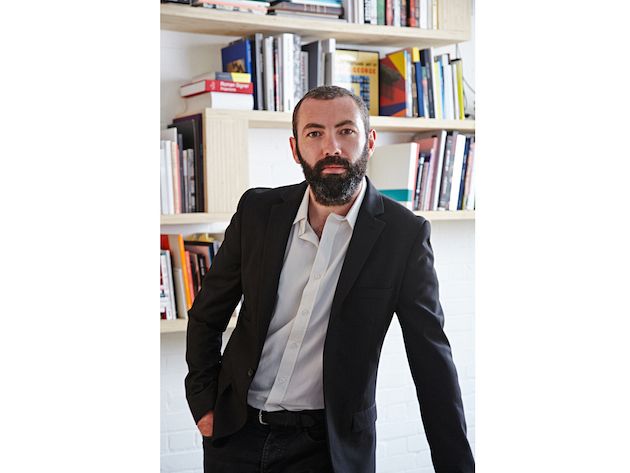Curator Fitsum Shebeshe developed this proposal during the 2014 Curatorial Intensive in Addis Ababa.
I am currently working for The Authority for Research and Conservation of Cultural Heritages / National Museum of Ethiopia, which is responsible for an art collection ranging from the time of Emperor Haile Silassie (1930−1974) up to the present day. The national collection is comprised of more than 800 artworks featuring mainly Ethiopian iconography as well as traditional secular and religious paintings.
The idea of collecting works of art for a museum began when the most celebrated Ethiopian artist Afework Tekle (1932−2012) was invited to showcase his works in Canada in the 1960’s. During this exhibition, one of his works titled African Heritage (a painting which is now on permanent display at the National Museum) was about to be sold; when Emperor Haile Selassie heard about it, he prevented the transaction. The artist was instructed to bring the work back to Ethiopia and leave it with the National Museum. Tekle later donated 80 of his drawings and paintings including African Heritage as a gift to the National Museum. His generosity was appreciated by the Emperor at the time, who rewarded him with a medal of honor. Since then, the museum has continued to receive a variety of artworks as gifts, mainly from local artists. However, over the years, the collection were neither stored nor conserved properly. Years of neglect have caused severe damage to a number of artworks that need urgent attention.
As a new employee of the National Museum of Ethiopia, there is a lot of curatorial work I will have to do. During the last nineteen months, I have arranged the artworks chronologically by artist names and the dates the works were made, as well as shelving them to prevent further damage. This was the easiest part of the enormous work I am about to begin.
The project Saving and Documenting While Learning has two components:
1. A new arrangement system for the collection.
We have begun to set up a mobile painting storage rack system and documenting the art works. Creating a database will be the following step. We have also published a catalogue in Amharic, the local language, which includes images of the artworks and small descriptions. We distributed this catalogue to galleries, fine art schools, art associations, and individuals. The forthcoming catalogues will be divided into three eras:
a) The Imperial Era / 1930−1974
b) Dergue Era / 1974−1991
c) FDRE Era / 1991−Present
2. Initiate a public conversation platform to create awareness regarding the collection.
My plan is to initiate a series of monthly conversation platforms at the National Museum for one year, in partnership with the Ethiopian Visual Artist Association. This programming will encourage the public to participate, to learn about art and most importantly, to engage with the museum collection from the Imperial time to present. The aim is to have this platform begin on December 5, 2014.
The panelists will include artists, curators, researchers, art historians and museum directors, such as: Menkir Bitew, Esseye G/Medhin, Abebaw Ayalew, Tadesse Mesfin, Meskerem Assegued, Konjit Seyoum, Bekele Mekonnen, Raphael Chikukwa and Girmay Hiwot.
Potential sources of funding include institutions and organizations such as: Authority for Research and Conservation of Cultural Heritage /ARCCH; cultural embassies based in Addis Ababa; UNESCO; and British Council Addis Ababa, among others.
Collaboration Memorandum of Understanding to be signed with the following institutions: Alle School of Fine Art and Design, Addis Ababa University; Ethiopian Visual Artists Association; Asni Art Gallery; and Zoma Contemporary Art Center.
Learn More
To learn more about this proposal please email Fitsum Tefera at fitsumt.pntg@gmail.com. To learn more about the Curatorial Intensive email info@curatorsintl.org.
